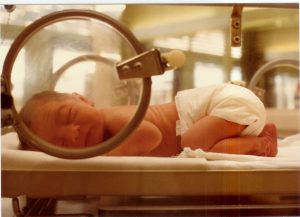When a woman is pregnant, it is quite common for her to worry about her future baby’s health and therefore be alert to all sorts of problems that may arise. Diseases such as fetal hydrops are an example that problems can occur even before labor begins, causing great concern to mothers. At the same time, it’s important to know that there are treatments and solutions for this type of problem, even though there are also some risks and complications that the disease can bring. Today, we are going to talk in depth about all aspects related to fetal hydrops, so you can better understand how it arises and how it can be treated.
What is Fetal Hydrops?
It is a disease that occurs while the baby is still inside the womb, where fluids accumulate in various parts of the fetus’s body1. The main issue is the accumulation of these fluids in vital organs such as the lungs, heart, and brain. Fetal hydrops typically occurs in at least two different places in the fetus’s body, and this is exactly what makes treatment so difficult. There are cases where it affects only one part of the fetus’s body, but these are rarer. The disease can be cured, although in its worst complications it may cause edema and, consequently, miscarriage. Because it is such a dangerous disease, it is greatly feared by pregnant women, but it’s important to understand well what causes fetal hydrops and how it acts on your baby’s body before worrying and taking any action.
Causes of Fetal Hydrops
A number of factors can cause fetal hydrops. It may be an immune disease, i.e., caused by the RH factor, which is basically the difference between the mother’s and baby’s blood—negative and positive (A negative with A positive, for example)—but it can also have non-immune causes. The main ones are:
- Changes in the development of the baby’s organs;
- Lack of proteins in the blood;
- Infections such as herpes, toxoplasmosis and syphilis;
- Turner syndrome;
- Heart problems in the mother, such as preeclampsia;
- Gestational diabetes;
- Mirror syndrome
The actual cause in each case of fetal hydrops can only be determined after diagnosis by a specialized doctor.
How is the Diagnosis of Fetal Hydrops Made?
The diagnosis of fetal hydrops can be made through a simple ultrasound exam, which shows in which parts of the fetus’s body the fluids are accumulating, as well as also showing signs of swelling in the placenta2. The test can also indicate the severity of the disease, which will make a difference when the doctor chooses the best treatment for each case.
Treatments for Fetal Hydrops
Depending on the severity of each case and the part of the fetus’s body that is affected, the type of treatment recommended by a doctor may vary. The first step doctors usually take is to recommend the use of corticosteroids so that the baby’s growth is accelerated and he or she can be born as quickly as possible, since treatment outside the womb is much easier. However, there are some exceptions in which surgery is performed with the fetus still in the womb. This is a very delicate type of surgery, which is why doctors tend to avoid this type of treatment, although it is often necessary. Depending on the age of the fetus, the doctor may also recommend an emergency cesarean section so that the baby can be born and treated as quickly as possible outside the womb. After birth, every baby affected by fetal hydrops needs to continue treatment, which will involve different medications depending on the cause of the disease. 
Complications of Fetal Hydrops
As we mentioned earlier, the worst complication of fetal hydrops is spontaneous miscarriage, which mainly happens in severe cases such as when vital organs like the brain or heart are affected. When the disease affects two different locations, treatment is always more complicated, as are the chances of complications, which are also greater. However, when fetal hydrops appears in only one part of the fetus’s body, complications may be less severe, manifesting only as heart or respiratory problems depending on the area affected.
Is Fetal Hydrops Related to the Zika Virus?
There is no evidence that the two conditions are related, even though there have been cases of fetuses with microcephaly who also presented with fetal hydrops. To date, no study has managed to correlate the disease with the virus, indicating that these were isolated cases and are more likely coincidences than indications of any complication3. Diseases affect us at all ages and are part of everyone’s life. However, when such a serious problem happens to a baby that is still developing, it really becomes a cause for concern. Fortunately, these days it is much easier to identify and, consequently, treat diseases like fetal hydrops with more accuracy. And while we hope medical advances will help us even more in the future, it is necessary to know how to deal with these problems now and take every measure within our reach so that the baby is as little affected as possible and can have a good and healthy life. Also see: Fetal Distress – Indication for Delivery? Photo: Jacoplane











